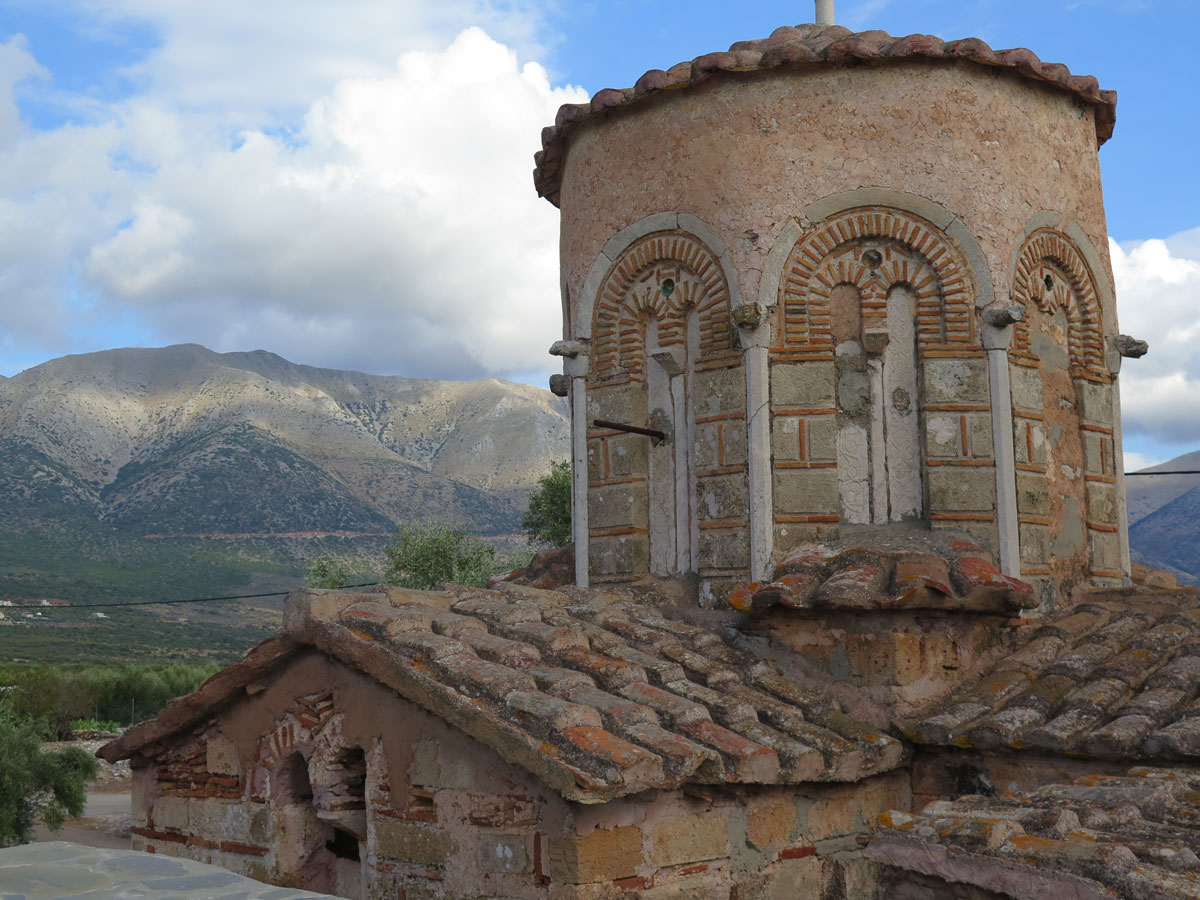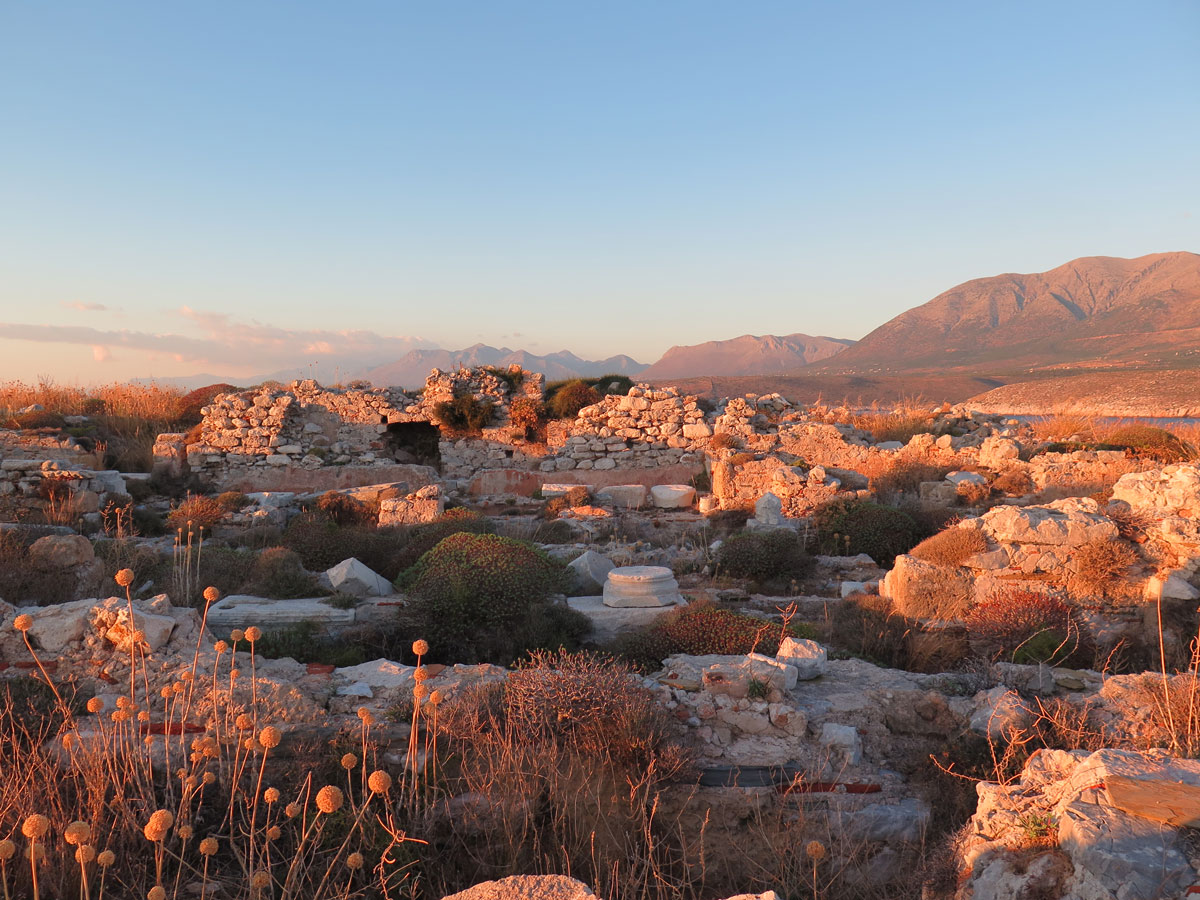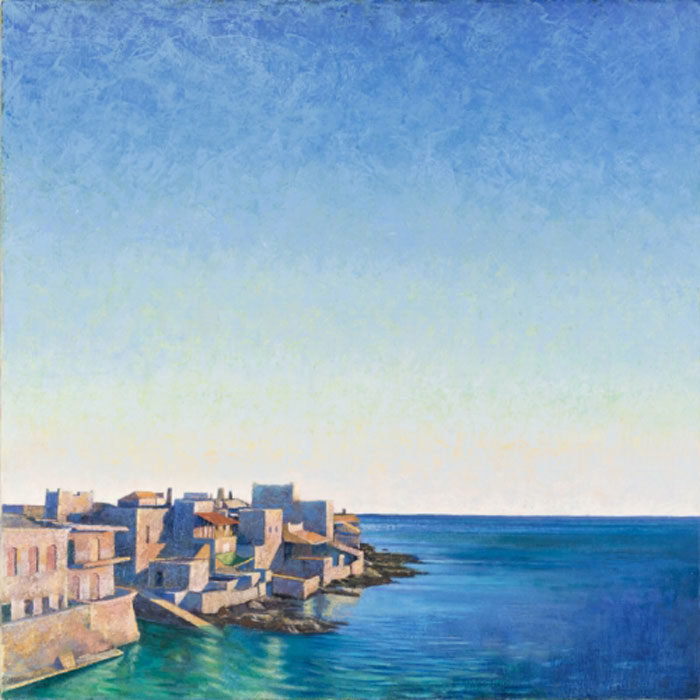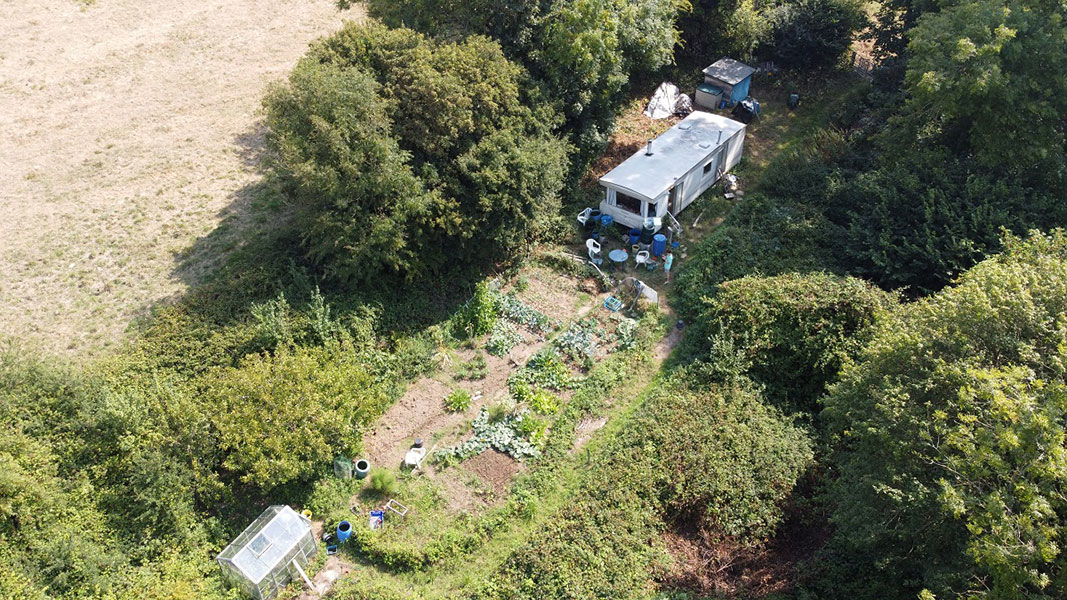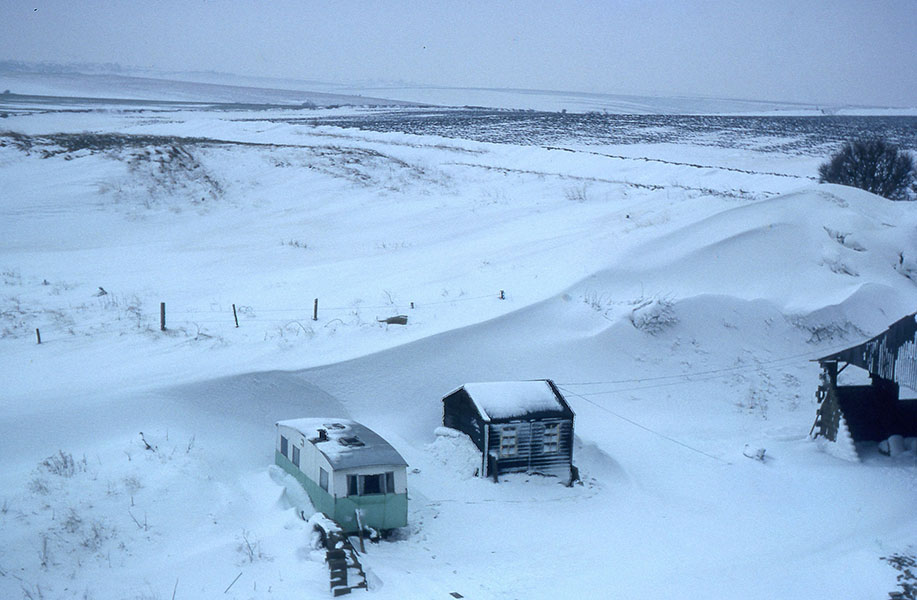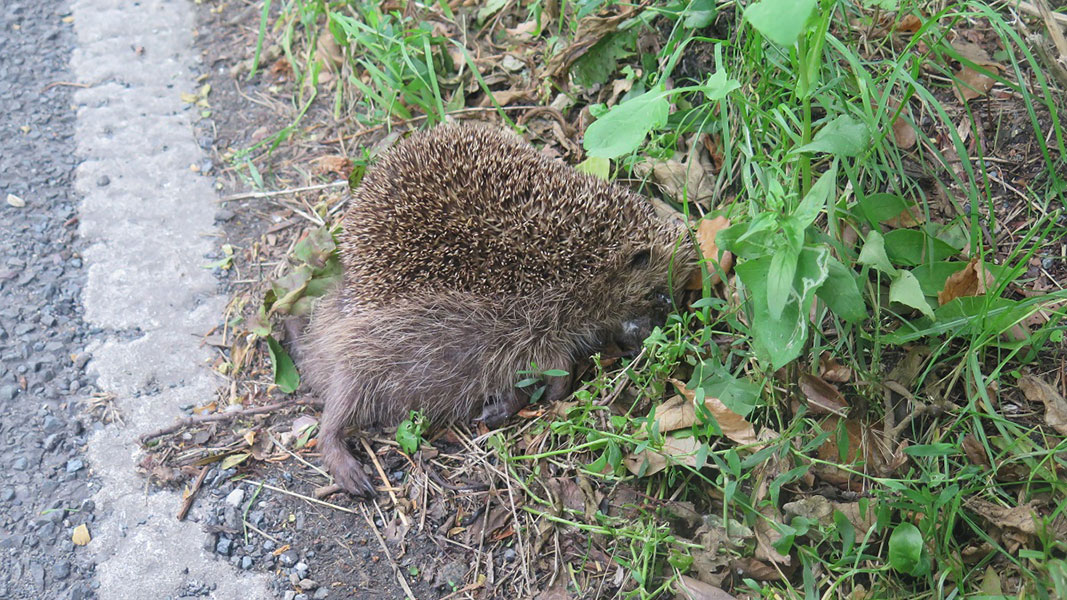38. Mani 3 – Ghosts And Jackals
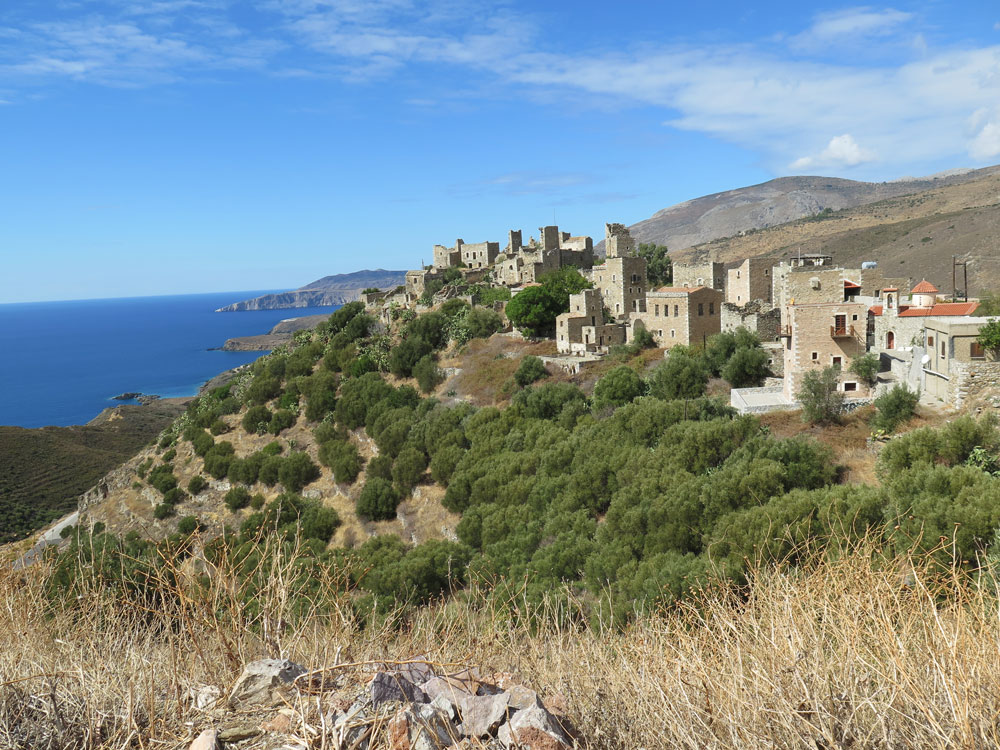
37. Mani 2 – Walking Towards Africa
January 7, 2021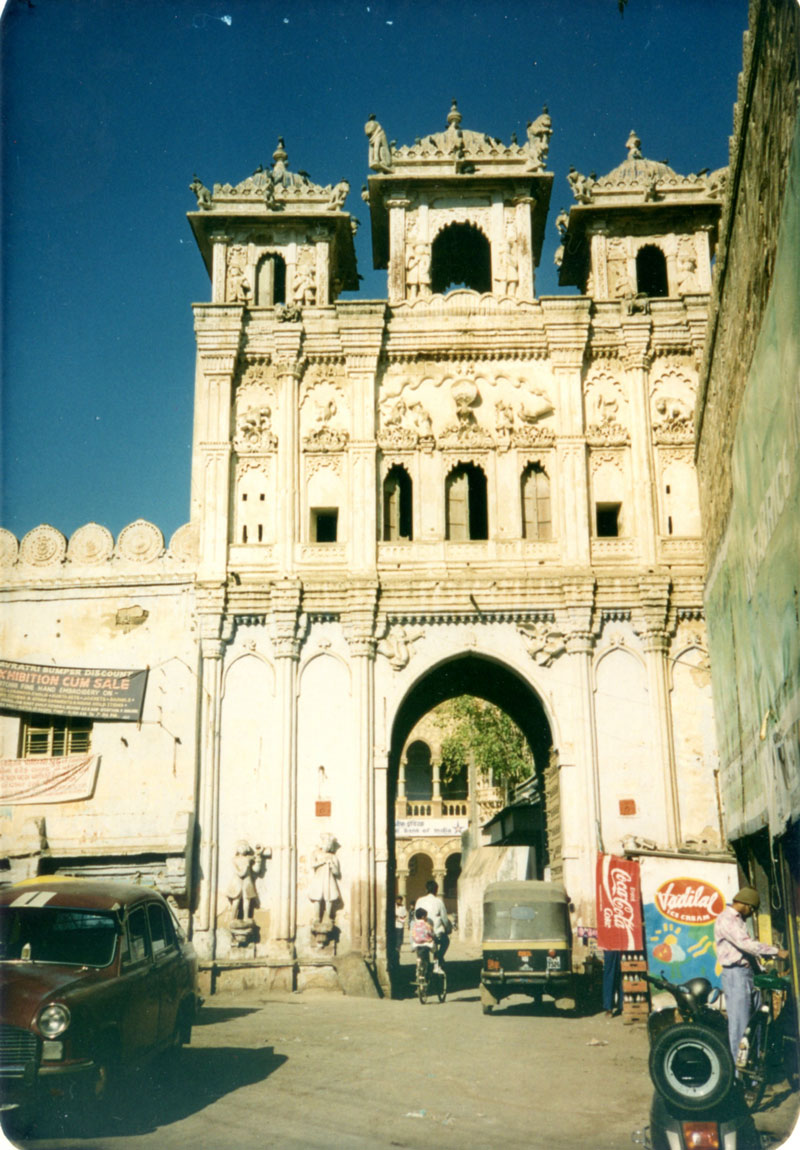
39. Seeking Seaside
January 21, 2021L eaving Toby to paint Vathia, I went to catch the early bus to Pirgos; it never materialised. Given the loveliness of the morning, I set off walking towards no particular goal. Soon a posh car pulled up: Vathia taverna's patron, off to buy vegetables, who dropped me in Pirgos, still in the ridge's morning shade. A friendly pharmacist with a look of Lenin advised me to forget the missing pill; it was too weak for worry about. So, armed with a large melon, I descended to Diros Bay, past a line of national flags (including a bare pole and no Union Jack), swam then, refreshed, went in search of Byzantine churches. The rough, winding tracks failed to lead to anything spectacular until I reached the heavily locked church of Taxiarchis, roofed with massive pantiles, which had an odd triangular facade of worn marble blocks built to hold a bell. Fragments of carved marble had been integrated into the fabric and several striking, colourful ceramic bowls were set into the outer wall of the apse. A walled graveyard contained recent memorials, each bearing photographs of the family members buried beneath. Distant on the hillside Aghios Petros church and the route we'd followed up the ridge were just visible.
By late afternoon I reached an isolated modern guest house. A deaf elderly lady appeared and phoned for the owner, who set me up with a top-floor room with a nice terrace. Food didn't seem an option but that melon with dry bread and dates sufficed until the morning when I left along another fading walled path past old quarries. In places stones or vegetation marked with red paint presumably indicated the route. A quail flew up then crashed into the undergrowth.
Regaining the main road, I asked a woman (humankind were hard to find in The Mani) for a food shop. She suggested distant tavernas at either end of the highway – nothing nearer. Luckily, she proved wrong. Not far on a flashing red sign offered petrol and snacks and Maria, with amazing violet eyes, created a vast, protein-rich sandwich. I bought their last sad tiropita (feta pastry) while her brother-in-law talked quietly of a girlfriend in Manchester.
Returning to the road, I turned off to another Agia Varvara, a handsome locked church with tile diaper-work, nice cat gargoyles and imprinted sockets for removed ceramic bowls. From there a yellow track wound down to Mezapos, a small seaside place where I swam beneath low cliffs created of a raised pebble beach consolidated in an iron-rich matrix. A dripping jogger overtook, greeting me in Italian as I ascended along the coast then further on, passing a hamlet, an old man asked 'Where are you going at this hour?' Pointing down to the frying-pan peninsula of Tigani, I told him I planned to sleep there. He wished me good luck and I descended with the sun.
At the end of an isthmus the land rose rockily, reinforced to form a defensive island. Within stone walls were ruins, stubs of fluted pillars rose-tinted by evening, low stone partitions and odd plaster-lined hollows. Water storage? Assuming this to be the remnants of a palace I sought a soft bed. Out of nowhere a youngish couple passed, seemingly searching something. They looked doubtfully in my direction then continued out of sight to the end of the peninsula. Later, an older man with nordic sticks, unaware, walked on into the gloom to stand in silhouette. Was he photographing the sunset? Later, he grunted his way back then the couple stumbled through darkness out of the fort. It was all rather odd.
A thyme-filled silence descended. Before sleeping, I ate the disgusting tiropita then slept, waking at intervals to admire the richly starlit sky, the bright moon rising in the early hours.Dawn was shaded by the ridge. On a bush a couple of stonechats fought noisily and a migrating cuckoo flew by. At the very tip of Tigani I finished the food then, passing pinks, sea lavendEr and a spike of sea squill, left the fort. Two men approached from the mainland, a young American in a wide-brimmed hat and Maria's brother-in-law from the filling station, who warned of wild boar. The American, an archaeologist studying Byzantine buildings, said I'd slept in the mediaeval basilica. The hollows in the ground were graves of notables and clergy. Had I lost a hankie? I retrieved it from a thornbush while climbing into the sunshine. In the village above a little old lady clad in old-style black, a long headscarf down her back, lifted a hand in an improbable wave.
That morning passed looking at more chapels, each lintel low-slung to force one to stoop before the altar. I cadged water from a woman with fluent English out checking her olives. She indicated St Hippolita's shrine on the hillside and as I followed the track grasshoppers with red or turquoise wings, familiar from childhood Austria, flew up from the track. Hot and hungry, I descended through another deserted village, Dri, eager to reach Gerolimenas, but went astray to end in Ochia past abandoned towers. At home, when describing those village towers to Pete, he knew exactly what I meant, showing me pictures of similar towers in Caucasian Georgia. Nothing new under the sun! A passing fruit and vegerable truck hit a bump and, all unnoticed, a large orange rolled into the verge. Devouring it, I descended into Gerolimenas, meeting a couple of dog-like beasts licking crushed cicadas from the tarmac. They resembled Indian jackals, slouching off in the same sly manner.
I joined Toby who, having booked two little upper rooms in a seafront hotel, was painting a view of the port from his window. In the evening we visited his preferred taverna which had a patron knowledgeable about The Mani. Asking about the odd dogs he confirmed they were jackals – rare, protected beasts in Greece.
We spent several days at Gerolimenas. Toby painted while I explored, swam and identified another familiar immigrant, the Plain Tiger butterfly, common in India but a newcomer to Europe.This was the end of the road; a bus to Areopoli, another back to Kalamata and the flight home.
Note: More of Toby's work can be seen on his website is www.tobywiggins.com

